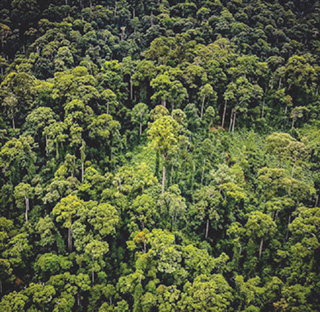Superior status for iconic tree
Published on: Friday, November 11, 2016

Kota Kinabalu: The 94.1m (309ft) super giant discovered at Danum Valley will soon be accorded "Superior Mother Tree" status, Sabah Conservator of Forests, Datuk Sam Mannan, told Daily Express. "The reason is big trees, old trees, huge trees usually are of superior genetic material. They have lived so long because of something special about them so we can collect seeds and mark them as superior tress," he said, on what his Department is going to do following the discovery of an "epic super giant" by Prof. Gregory Asner.
ADVERTISEMENT
The Head of the Carnegie Airborne Observatory stumbled upon the find in the course of 3-D mapping to gain insight into the structure, quality, carbon stock and biodiversity patterns of Sabah's forests since March, in partnership with Sabah Forestry Department. Besides the 94.1m super giant confirmed as the tallest tropical tree in the world, Asner went on to give Sabah a clean sweep of having all top 50 tallest tropical trees on the planet – 33 in Danum, 10 in Tabin, six in the UNDP area. Mannan said the findings have many implications for Sabah. "We always think the Redwood (in California) is massive and here is a treasure for the world in our own place – giants equivalent to the length of five Sperm whales which we never knew until they did this survey.
ADVERTISEMENT
I think this is a starter, let's see how we develop further," he said. He said the idea of 3D mapping has much more serious objectives than just finding the tallest trees but then everything depends on whether the funding is there to move things to its end objectives. "It is not cheap, the aeroplane has to fly thousands of miles to get here, it got its crew, and they have to get to work straight away, once they move from simple carbon stock mapping to something else like biodiversity assets survey, it's far more complicated and more expensive. So they are doing their best to source funds from around the world and am sure if funders feel it's worth doing, we should be able to get help."
ADVERTISEMENT
Mannan said people always think the Amazon is super but then per unit basis, the carbon stock mapping found Sabah's forest got 250 tonnes of carbon per hectre and so is far richer, almost double the carbon content compared to the Amazon."We want to use all this information for land use planning – the most important reason for the Carnegie Airborne Observatory project. Maybe later on we have no choice but to swap lands such as somebody got a good forest land but the soil is poor but we have certain places in forest reserves which no longer have forests, so why don't we do a swap. "We take the forest and let them take what's useful to them on one to one basis or more to conservation and less for other uses," Mannan said on the future direction. But since land use is not the jurisdiction of the Forestry Department, how useful is the airborne mapping information for land use planning?"We are part of the team, like the Chief Minister's Department, Land and Survey Department, Secretary of Natural Resources are important, perhaps Drainage and Irrigation Department, the Water Department all of which have land assets. "We would work together and revise land use, areas which have high biological diversity they give it to us and areas which are degraded whatever maybe they have better use of them," Mannan said. On how useful the information would be for rebuilding Sabah's forests once the structure of the forest, carbon stock and biodiversity pattern have been mapped out, he said:"First is perhaps focussing on areas that really need to be rebuilt. Given specific information, we can then pick, choose, focus on what really needs treatment, when and how, that way our work is far more efficient instead of doing things on a random basis based on general information." As for how useful will the 3D maps be in identifying places to increase the conservation of forests to achieved its avowed objective of a 30pc Totally Protected Area for Sabah, he said: "Once they have analysed the information they have gathered, we'll be able to pin point more areas that should be turned into totally protected status if they had not been turned into PS already," Mannan said.Mannan said some people may not like the fact "that we lock up lands". "We don't just lock up, we manage. There may not be much money in the beginning but then from the tourism point of view, that's the future. We can sell the carbon without losing anything. Those things are important because he (Prof Asner) says we got 250 tonnes of carbon per hectre which we did not know before, maybe it got commercial value of some kind and forests that are regenerating would be absorbing more carbon than forests in equilibrium. "It's not timber any more, it's carbon now and then go beyond that to biological assets because as time goes through maybe our biological assets will become more and more valuable but we must keep them. Stay up-to-date by following Daily Express’s Telegram channel.
Daily Express Malaysia




